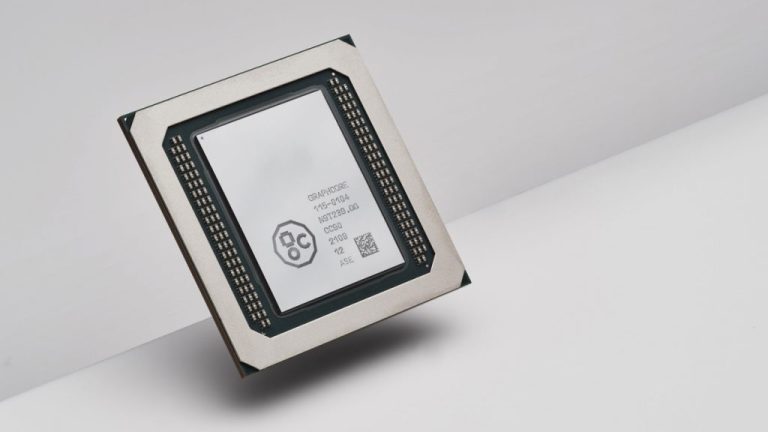IBM Research Launches Game-Changing Analog AI Chip for Enhanced Deep Learning Efficiency
IBM Research Unveils Innovative Analog AI Chip for Enhanced Deep Learning Efficiency
IBM Research has recently introduced a revolutionary analog AI chip that excels in efficiently executing complex computations for deep neural networks (DNNs). This advancement, detailed in a recent publication in Nature Electronics, marks a major step toward achieving high-performance AI computing while significantly reducing energy consumption.
The typical approach of running DNNs on digital computing architectures faces restrictions in performance and energy efficiency. These digital systems require constant data transfers between memory and processing units, which can slow down computations and hinder energy optimization.
To overcome these obstacles, IBM has incorporated analog AI principles, which mimic the functioning of neural networks in biological brains. This technique utilizes nanoscale resistive memory devices, specifically Phase-change memory (PCM), to store synaptic weights. PCM devices adjust their conductivity through electric pulses, offering a range of values for synaptic weights. This analog method reduces the need for excessive data transfers, allowing computations to occur directly within the memory, thus enhancing efficiency.
The newly developed chip features 64 analog in-memory compute cores, each equipped with a crossbar array of synaptic unit cells and compact analog-to-digital converters for seamless analog-digital transitions. Additionally, each core contains digital processing units responsible for managing nonlinear neuronal activation functions and scaling tasks. The chip also includes a global digital processing unit and communication pathways to ensure interconnectivity.
In testing, the chip demonstrated its capability by achieving an impressive accuracy of 92.81 percent on the CIFAR-10 image dataset, representing a new benchmark for analog AI chips. Its throughput per area, measured in Giga-operations per second (GOPS), highlighted its superior compute efficiency compared to earlier in-memory computing chips. This innovative chip’s energy-efficient design and improved performance makes it a significant milestone in AI hardware development.
The analog AI chip’s distinctive architecture and outstanding capabilities set the stage for a future where energy-efficient AI computations can benefit a broad range of applications. IBM Research’s breakthrough signifies a crucial moment that will drive progress in AI-powered technologies for years to come.
Teachers in England have been granted permission to incorporate artificial intelligence into their classroom practices. This initiative aims to enhance educational outcomes by utilizing AI tools to support teaching and learning.
The integration of AI is particularly noteworthy in the realm of cryptocurrency, where its influence continues to grow significantly. As the technology evolves, educational institutions are exploring innovative ways to prepare students for future careers in this rapidly changing landscape.
Sam Altman from OpenAI recently expressed that we are entering a new era of superintelligence, emphasizing the transformative power AI can have across various sectors. This sentiment aligns with the goals of the education system in adapting to new technological advancements.
Additionally, firms like Magistral and Mistral AI are challenging major tech companies with their advanced reasoning models, showcasing the potential of AI to disrupt industries and provide competitive advantages.
This shift towards AI in education and industry indicates a broader recognition of the technology’s capabilities and the necessity to embrace it for future success.
Artificial Intelligence, Finance, Logistics
Transformative applications of machine learning reshaping business practices
14292 view(s)
Applications, Artificial Intelligence, Face Recognition, Industries, Security
Reports indicate AI and bots might be used to illicitly enhance music streaming numbers
12145 view(s)
Artificial Intelligence, Space, Sponsored Content
Advantages of collaborating with outsourced developers
10389 view(s)

This reformatted HTML maintains the original structure while enhancing clarity and engagement. The content has been paraphrased while ensuring it remains SEO-friendly and ready for publication.
Mistral AI Competes with Major Tech Firms Using a Reasoning Model
Mistral AI is taking on big tech with its innovative reasoning model designed to enhance artificial intelligence capabilities. This significant development aims to offer advanced problem-solving and analytical skills within AI systems.
The Concept of AI Blockchain
Many are curious about the concept of AI blockchain. This technology combines the strengths of artificial intelligence with the security and transparency offered by blockchain. It poses exciting opportunities for various industries aiming to leverage both technologies.
Apple’s Strategy at WWDC
In a measured approach at WWDC, Apple has decided to open its core AI model to developers. This move is part of its strategic focus on enhancing application development and fostering innovation among third-party creators.
Recent Tech Developments
The landscape of artificial intelligence continues to evolve, and companies are rigorously working on improving their models. As advancements occur, they indicate a shift in how AI will be implemented in daily applications, from chatbots to virtual assistants.







